Andrena cineraria
Fast facts
- Common name(s)
- Ashy Mining Bee
- Scientific name
- Andrena cineraria
- Bee group
- A species of solitary bee, belonging to the mining bee (Andrena) group
- When to see it
- March – June
Description
The Ashy Mining Bee is one of the most distinctive spring-flying solitary bees. A species of mining bee, the monochrome females dig nest burrows in the ground and often nest close together to form large groups.
Out early in the year, the Ashy Mining Bee depends on early-flowering shrubs for nectar and pollen.
Identification
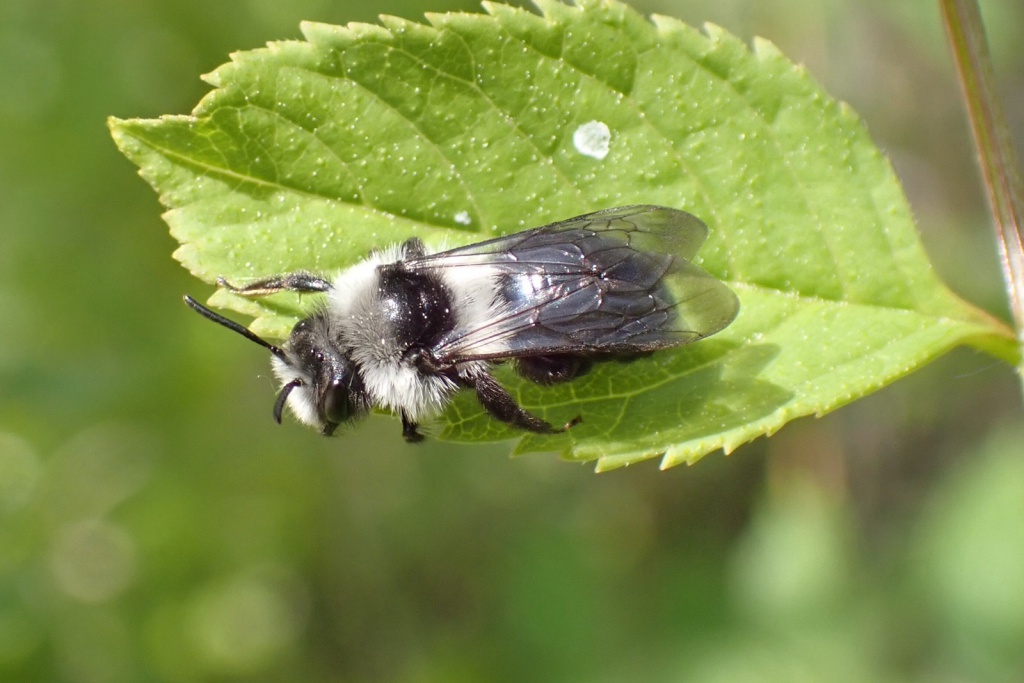
Females
The honeybee-sized monochrome females are distinctive. Females have two broad ashy-grey hair bands across the front and bottom of the thorax, and ashy-grey hairs on the face.
The abdomen is sparsely haired, revealing a shiny abdomen that gives a blue sheen.
The legs are covered in dense black hairs.
Did you know?
Ashy Mining Bees are important pollinators of Oilseed Rape as their activity peaks with the flowering of Oilseed Rape.
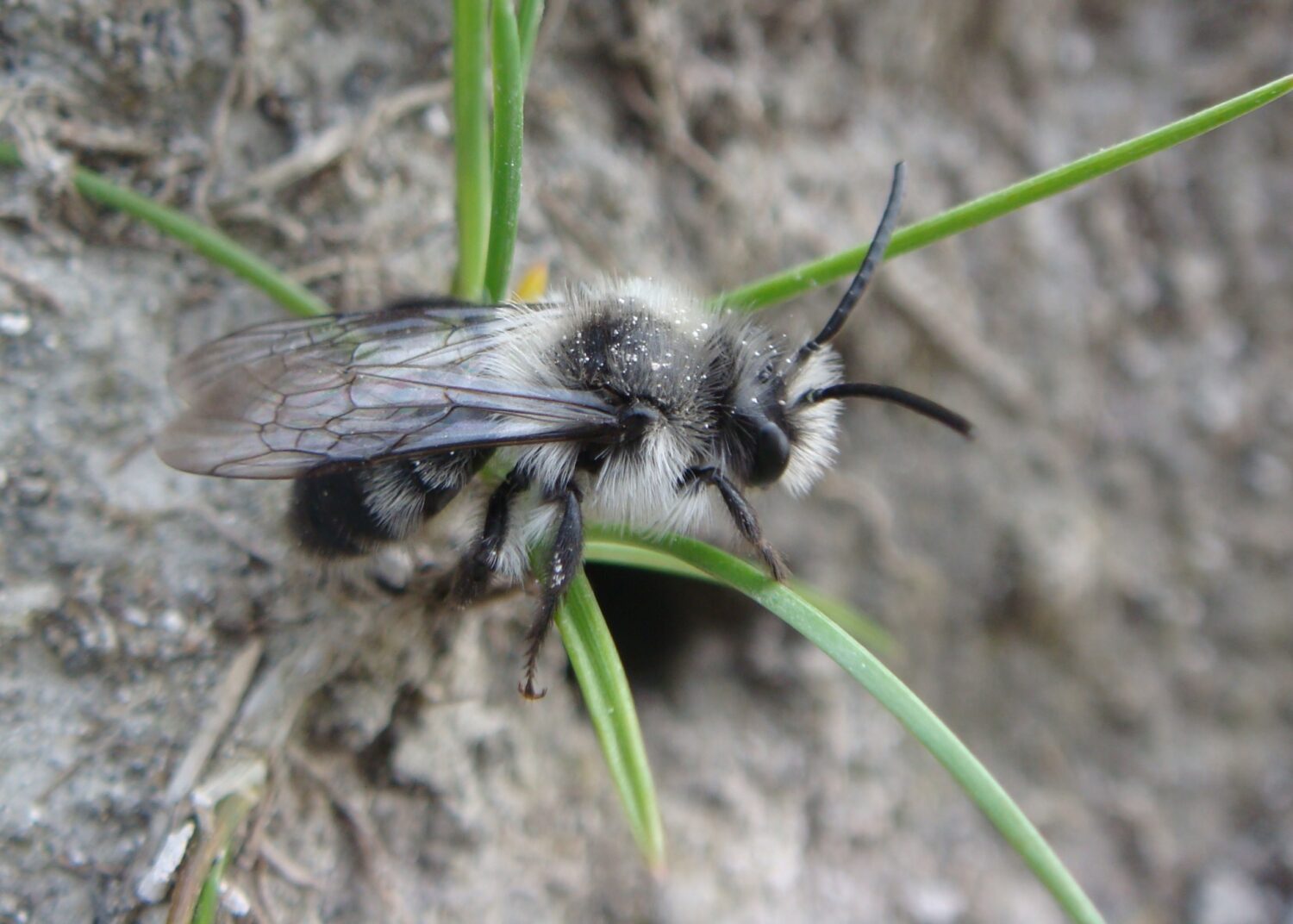
Males
Males are smaller and slimmer than females with very long antennae.
Males have extensive ashy-grey hair across their thorax and these hairs often extend onto the abdomen. There is also a conspicuous tuft of neat grey hair on the face, often referred to as resembling a ‘shoe brush’.
Please note that faded males are difficult to tell apart from males of other mining bee species.
Explore more images of the Ashy Mining Bee here
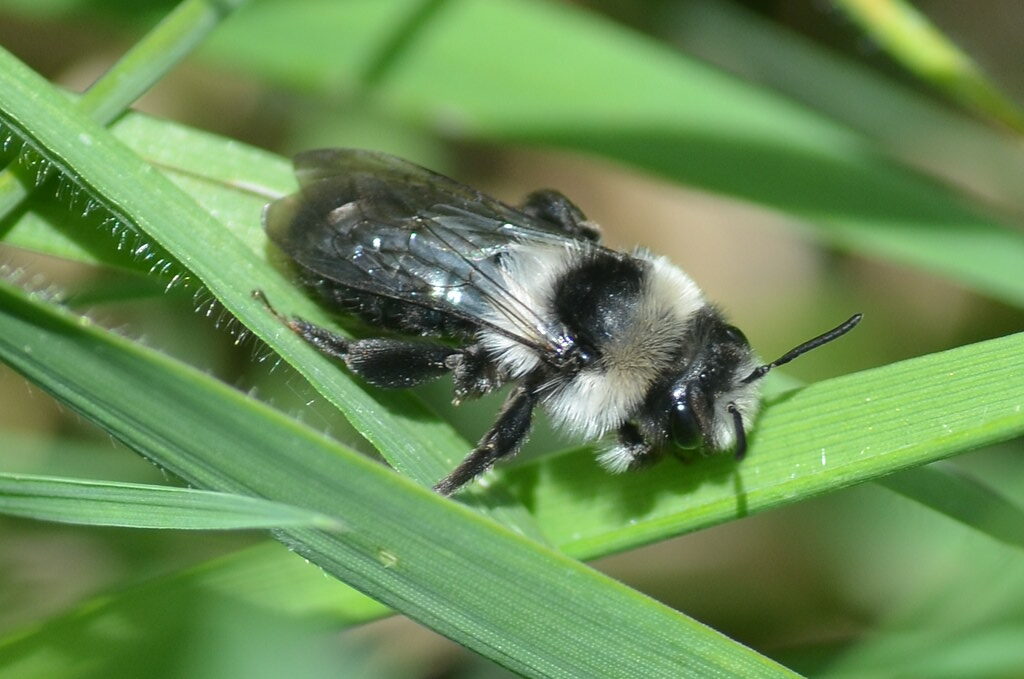
Spotted this bee?
Share your sighting of the Ashy Mining Bee and other North East Bee Hunt target species to contribute to the conservation and study of our region’s bees.
Ecology
Females are ground-nesters, excavating their nests in bare or short-vegetated ground. This excavated material builds up around the nest entrance to form distinctive volcano-like mounds, a characteristic feature of mining bees. A nest consists of several egg cells. Each egg is provisioned with pollen and nectar, and lined with a waterproof substance. While solitary, females often nest close together in large aggregations at suitable nesting sites.
The Ashy Mining Bee can be found in a variety of habitats and occasionally gardens. An early-flying bee, it depends largely on spring-flowering shrubs for nectar and pollen.
Discover more about this species here
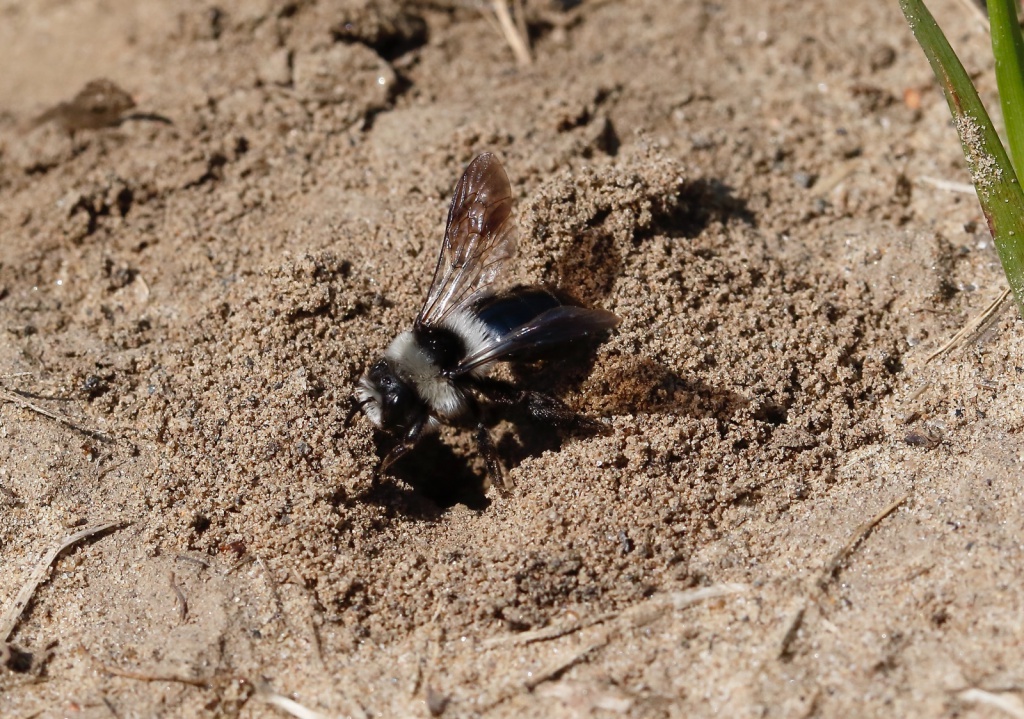
Regional Distribution
There are records of this species from Northumberland and County Durham, with fewer records further north of the region. In 2020, the North East Bee Hunt received ten records of the Ashy Mining Bee, mainly from areas along the Tyne. This species is considered common and widespread across much of Britain and Ireland, and is thought to be increasing in both range and abundance in the south.
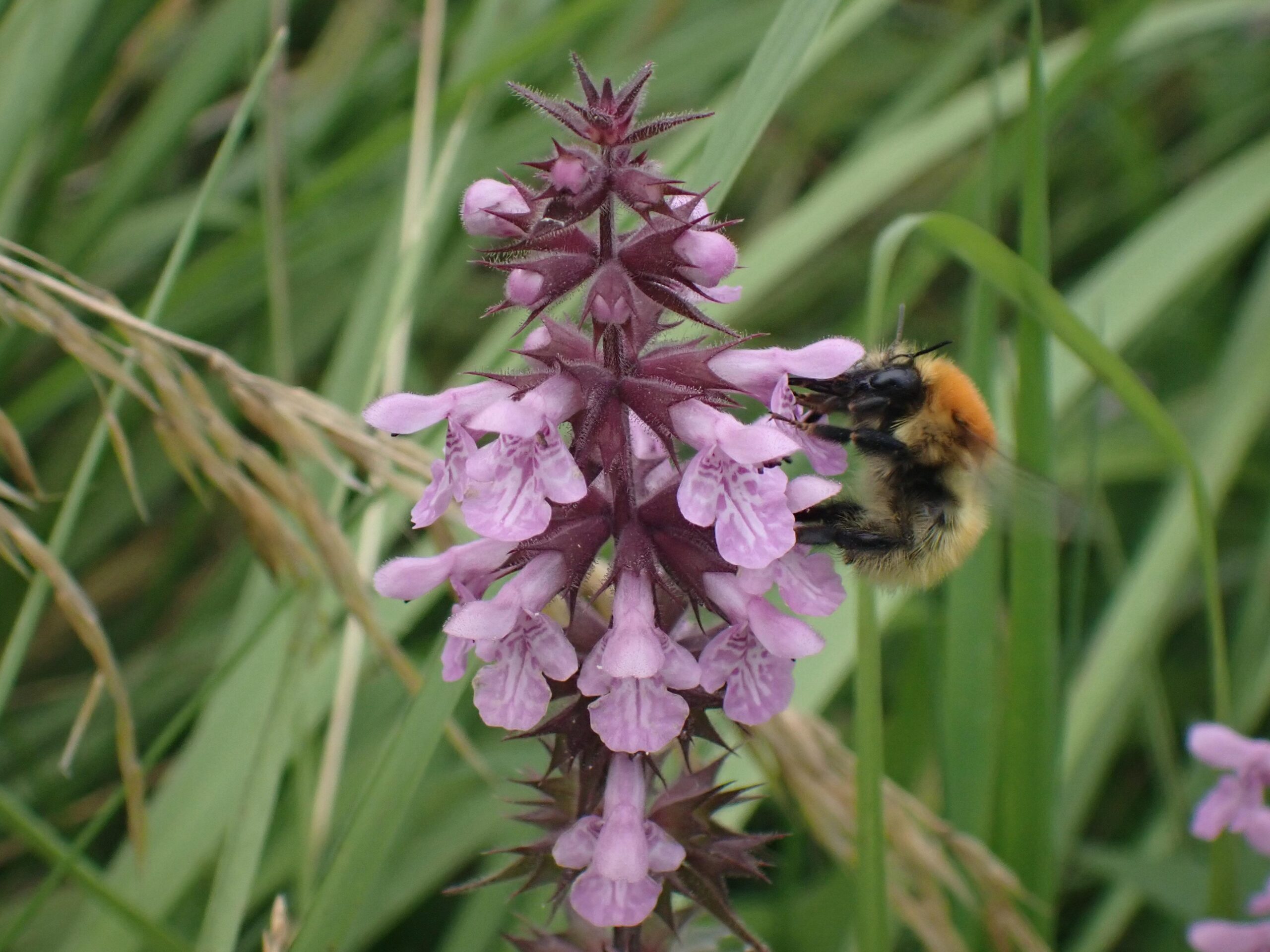
Join the North East Bee Hunt
Urban or rural, beginner or expert, we need your help to record bees across the North East this spring and summer.
Your records can add to our understanding of bees in the region and inform conservation and monitoring efforts.
Taking part is easy and every record counts, wherever you live in the region. Records of all bee species are encouraged.